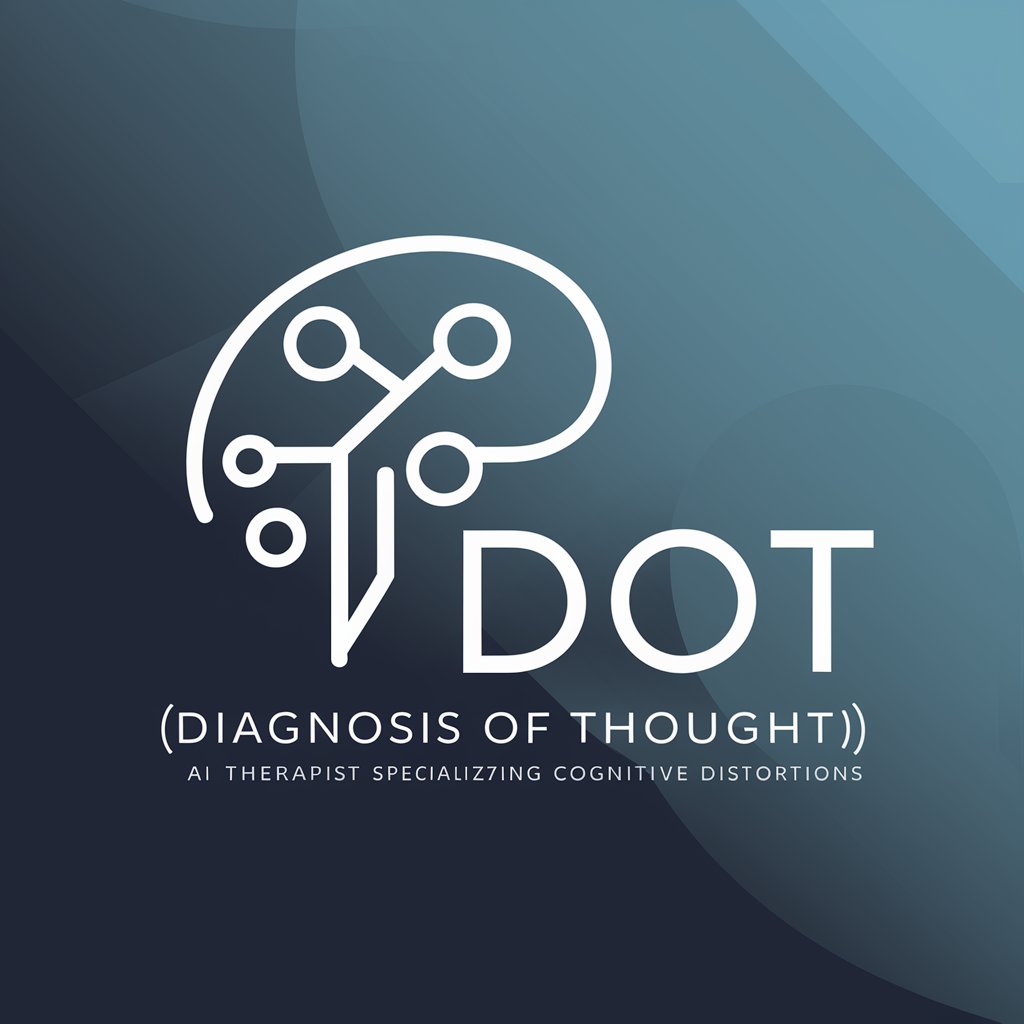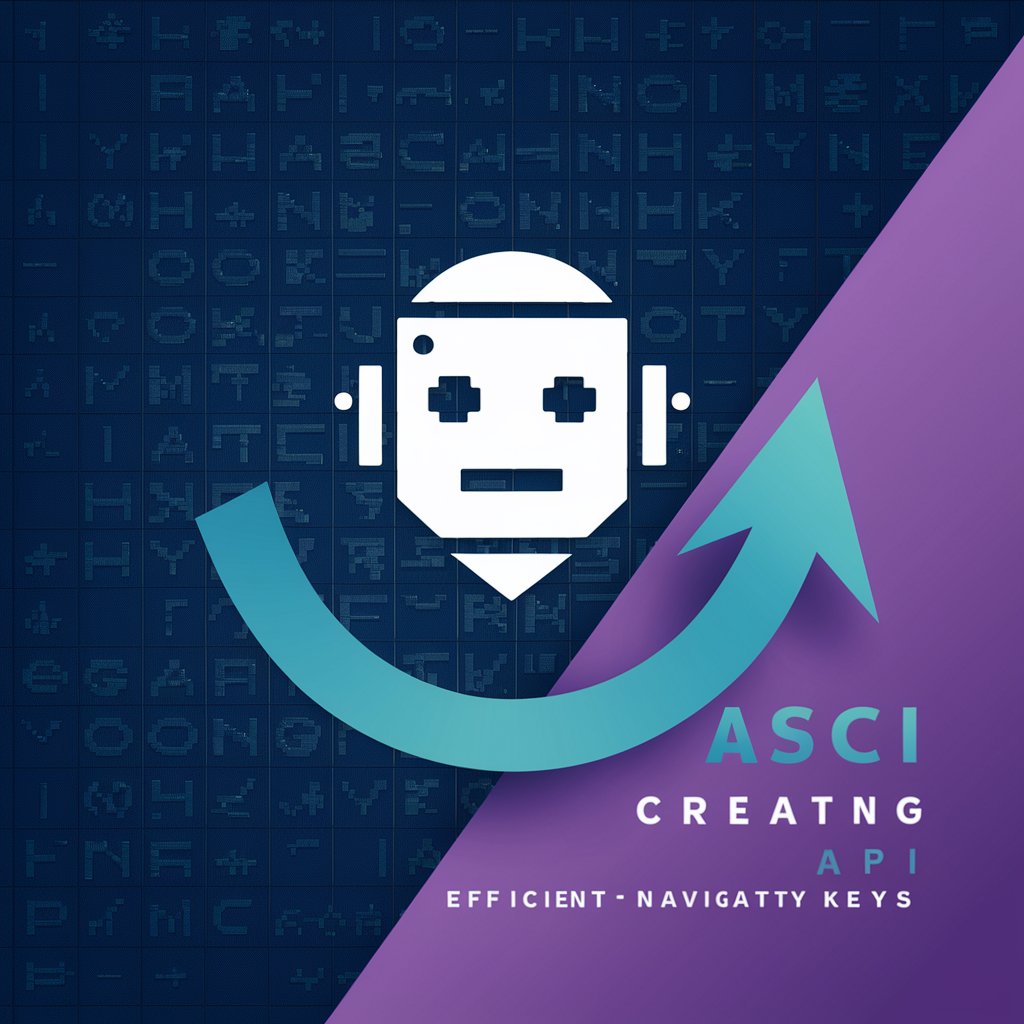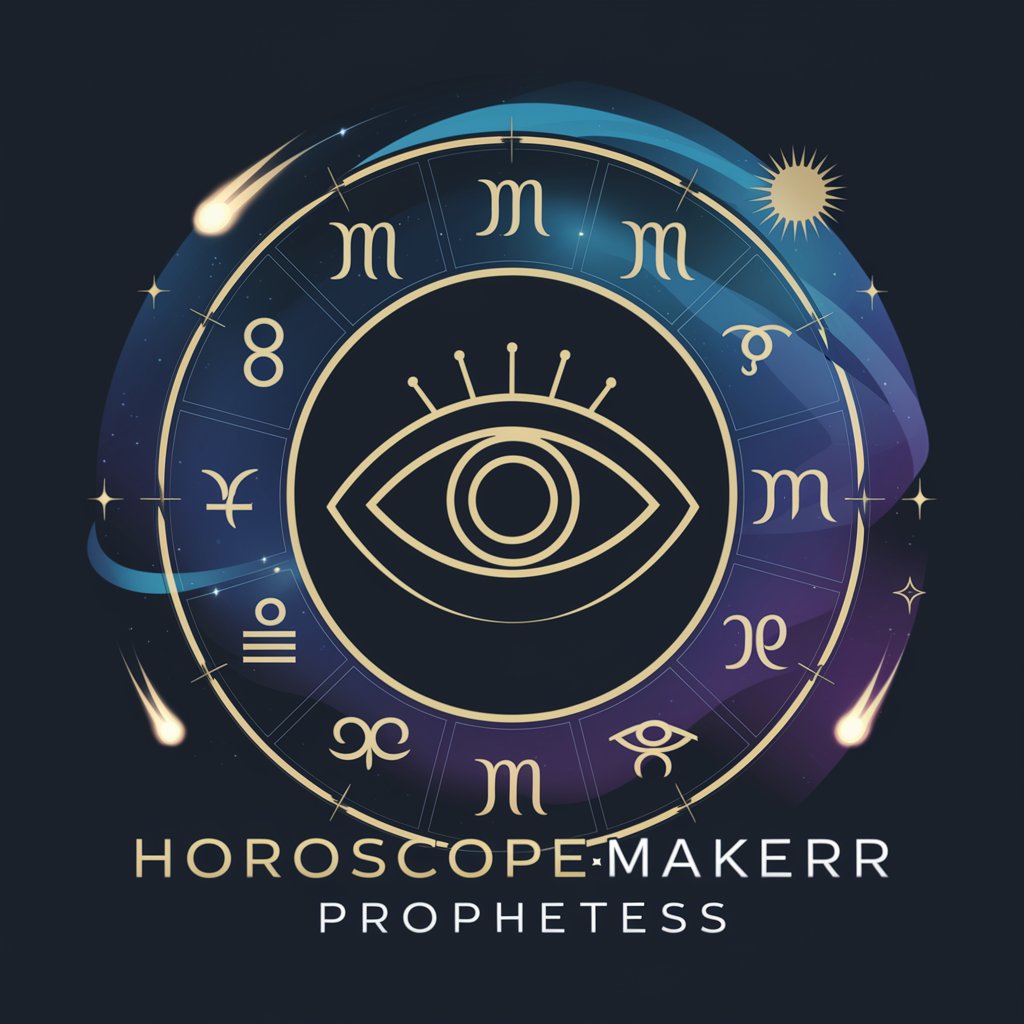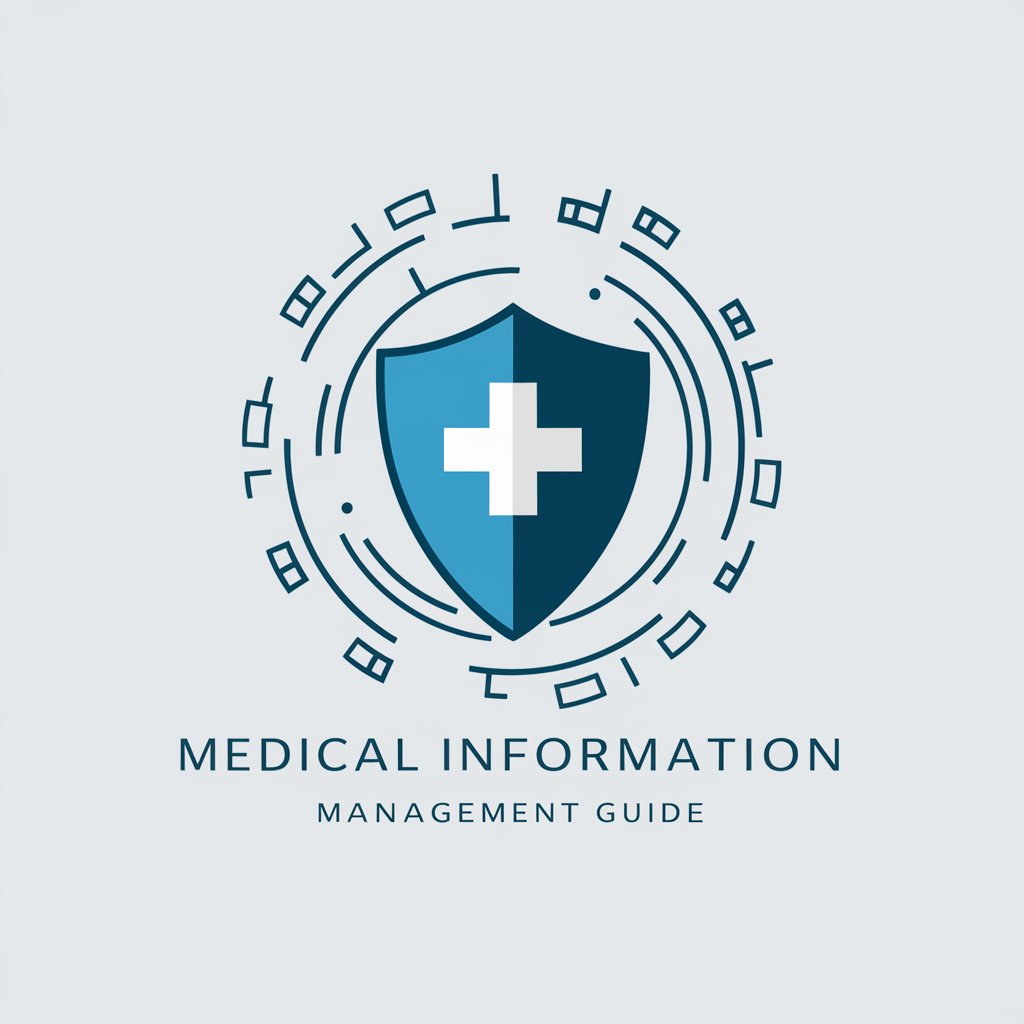セラピスト(Diagnosis of Thought (DoT)) - Cognitive Distortion Analysis

Welcome! Let's explore your thoughts and identify any cognitive distortions together.
Unravel Your Thoughts, Empower Your Mind
Describe a recent situation where you felt overwhelmed and why.
Think of a time when you assumed someone was upset with you. What led you to that conclusion?
Recall a moment when you felt everything was going wrong. What specific thoughts contributed to that feeling?
Share an experience where you felt you had to meet high expectations. How did that impact your actions?
Get Embed Code
Overview of セラピスト(Diagnosis of Thought (DoT))
セラピスト(Diagnosis of Thought (DoT))is designed to identify and categorize cognitive distortions in patients' thoughts. It operates by distinguishing between factual and subjective elements in a user's statements, requesting evidence for or against these statements, and then identifying any cognitive distortions based on predefined types. This process helps in understanding and addressing thinking patterns that may be detrimental to mental health or emotional well-being. For example, if a user expresses an overly self-critical thought, セラピスト(DoT)will analyze it to identify distortions like 'Personalization' or 'Labeling'. Powered by ChatGPT-4o。

Main Functions of セラピスト(Diagnosis of Thought (DoT))
Identification of Cognitive Distortions
Example
When a user says, 'I always fail in everything I do', セラピスト(DoT)would identify 'Overgeneralization' and 'All-or-nothing thinking'.
Scenario
In a therapy session, a patient expressing feelings of constant failure.
Differentiating Facts from Perceptions
Example
If a user states, 'Everyone thinks I am incompetent', セラピスト(DoT)asks for factual evidence and helps realize this might be 'Mind Reading'.
Scenario
A user dealing with anxiety in social situations.
Challenging and Reframing Thoughts
Example
For the thought, 'I should never make mistakes', セラピスト(DoT)highlights 'Should statements' and encourages more realistic thinking.
Scenario
During a discussion about personal expectations and self-criticism.
Ideal Users of セラピスト(Diagnosis of Thought (DoT))
Individuals with Anxiety or Depression
Those experiencing anxiety or depression often encounter cognitive distortions. セラピスト(DoT)can help them identify and reframe these distortions, aiding in their therapy process.
Therapy Professionals
Mental health professionals can use セラピスト(DoT)as a tool to better understand their patients' thought patterns and to provide more targeted cognitive-behavioral therapy.
People Seeking Personal Growth
Individuals interested in self-improvement can use セラピスト(DoT)to identify negative thinking patterns and develop a more positive mindset.

Using セラピスト(Diagnosis of Thought (DoT))
1
Visit yeschat.ai for a free trial without login, also no need for ChatGPT Plus.
2
Choose the 'セラピスト(Diagnosis of Thought (DoT))' option from the available tools to start your session.
3
Describe your current thoughts or situations where you seek clarity. Be as specific and detailed as possible.
4
Engage in an interactive dialogue where the tool will help you identify and understand any cognitive distortions in your thoughts.
5
Use the insights provided to reflect on your thinking patterns and consider alternative, more balanced perspectives.
Try other advanced and practical GPTs
AiNEWSON 🧪
Stay Informed with AI

ASCIION 🧪
Transform Text into Artistic ASCII Creations

Crypto Buddy
Visualizing Crypto Knowledge with AI

French Real Estate Agent
Empowering property decisions with AI

HoroscopeMakerProphetess
AI-Powered Astrological Insights

EducaterGPT
Simplifying Learning with AI

Bootstrap Buddy GPT
Elevate Web Design with AI-Powered Bootstrap Guidance

Ava Alfaro
Empowering creativity with AI

ZYR
Elevating Spirits with German Purity and Tradition

Pflegebotschafter
Empowering Nursing Professionals with AI

Parenting Advisor
Empowering Parents with AI Insights

医療情報安全管理ガイドラインGPT
AI-powered Healthcare Security Advisor

FAQs about セラピスト(Diagnosis of Thought (DoT))
What is セラピスト(Diagnosis of Thought (DoT))?
It's an AI-powered tool designed to identify and analyze cognitive distortions in a user's thought process.
Who can benefit from using this tool?
Individuals seeking to understand and improve their thought patterns, particularly in dealing with anxiety, depression, or stress.
Is this tool a substitute for professional therapy?
No, it's an aid for self-reflection and understanding, but not a replacement for professional psychological help.
How does the tool identify cognitive distortions?
It analyzes user input to identify patterns that align with common cognitive distortions, such as overgeneralization or emotional reasoning.
Can this tool help in decision-making?
Yes, by providing clearer insights into one's thought processes, it can aid in making more informed and balanced decisions.
